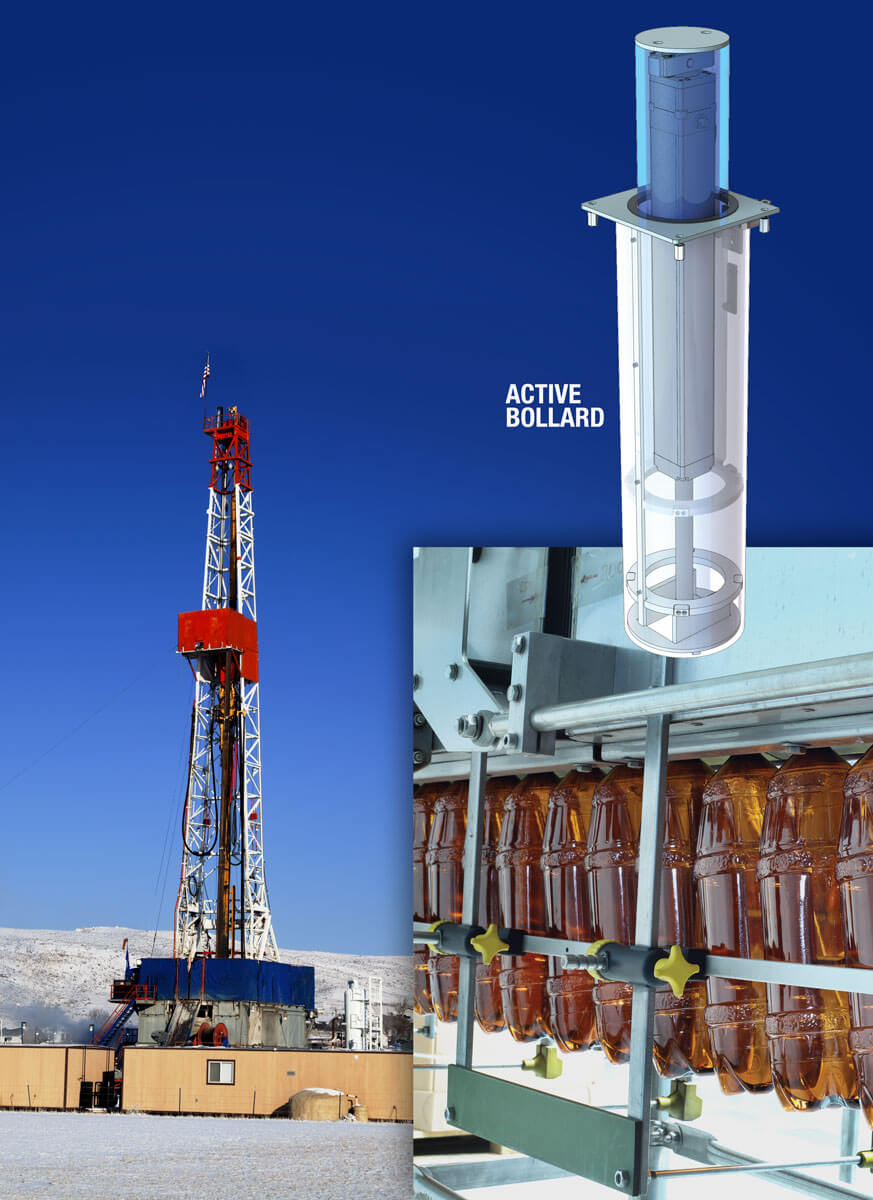Avoid the pitfalls, gain all the benefits of replacing hydraulics with electric actuators
By Ryan Klemetson on July 9, 2019
 Electric actuators continue to find new and exciting places within automation processes from the mundane to some of the most extreme operating environments on the planet.
Electric actuators continue to find new and exciting places within automation processes from the mundane to some of the most extreme operating environments on the planet.
Everyday machine designers seek alternative electric solutions to hydraulic cylinders for the very first time. However, there are many common pitfalls to properly sizing an electric equivalent. When sized correctly, replacement with high-force electric linear actuators can provide tremendous benefit in processes, quality and reducing your total cost of ownership.
Avoid Costly Sizing Mistake
Often the initial thought is to determine maximum hydraulic system capability and use this as a starting point to size an electric actuator. In some cases this may be the true application requirement. More often this is not a valid sizing method because it over-sizes the linear actuator, adds unnecessary components like gear boxes, and increases the size and cost of the motors and drives needed to control the actuator. All of this results in increased footprint and cost, plus an improper evaluation of the total cost of ownership (TCO).
In our previous blog posts, “High force linear actuators: how to convert from hydraulic to electric, Part 1 of 2” and Part 2 of 2 we discuss more accurate ways of determining thrust within a hydraulic system. Rather than the simple “area x pressure” method, Tolomatic recommends digging deeper and measuring pressure on both sides of the cylinder to determine forces based on total effective surface pressure. Measuring pressure as close to the cylinder as possible and using the formula below, results in a more accurate calculation of an application’s force requirements:
Force = (Area1 x Pressure1) – (Area2 x Pressure2)
Download Tolomatic’s How to Guide on Converting hydraulic cylinders to electric actuators to see more examples and in-depth tips on how to effectively create an electric motion solution to replace a hydraulic system.
Return on Investment with Electric Actuators
When properly sized, selected and installed, electric linear actuators can generate significant operational savings in TCO. There are many methods for calculating the cost of operating both fluid-based systems and all-electric systems. Even at varying utility costs, operating an all-electric solutions can save thousands of dollars, yielding a quick return on investment (ROI) and offsetting any premium on initial purchase price of the electric alternative. There are times when a single electric actuator will cost less than building the equivalent system with hydraulic components.
Time is Money
More than ever before, organizations are looking beyond cost of components and utilities costs to determine their TCO. There are serious impacts to the bottom line related to setup times, unexpected down-time associated to equipment failures or improper machine operation, along with time spent on maintenance and upkeep of these systems. We refer to this as “The Iceberg Principle”. Beyond initial purchase price, additional costs include time spent maintaining extra equipment, fluids, filters, and system adjustments to maintain performance. All of these costs quickly add up to make low cost hydraulic cylinders look less favorable.
Once a hydraulic application is targeted for cross over to an electric solution, Tolomatic has a wealth of resources to help step through the process of optimizing the design (including footprint, cost, life, etc.…) and providing a high performance, long lasting solution. See our educational webpage dedicated to converting hydraulic systems to electric motion solutions.
Value Beyond Design
 Benefits of electric actuators installed into a machine have proven value that should be considered in the technology evaluation process. Motion control solutions, due to their basic operating principles, can provide a wealth of information about how the actuator and the processes are performing. Monitoring data such as current, speed, position error, and velocity error can provide preemptive insights into potential problems with part quality, equipment set-up, worn tooling, actuator damage or other areas of operation, so that issues can be addressed before additional scrap or damage occurs.
Benefits of electric actuators installed into a machine have proven value that should be considered in the technology evaluation process. Motion control solutions, due to their basic operating principles, can provide a wealth of information about how the actuator and the processes are performing. Monitoring data such as current, speed, position error, and velocity error can provide preemptive insights into potential problems with part quality, equipment set-up, worn tooling, actuator damage or other areas of operation, so that issues can be addressed before additional scrap or damage occurs.
Find Out More
Put our linear motion expertise to work for you on your next automation project. Listen to webinar on Benefits and Sizing Tips for Replacing Hydraulics with Electric Actuators. Discover all of Tolomatic’s resources for making the conversion from hydraulics to electric actuators simpler for equipment builders and designers.
